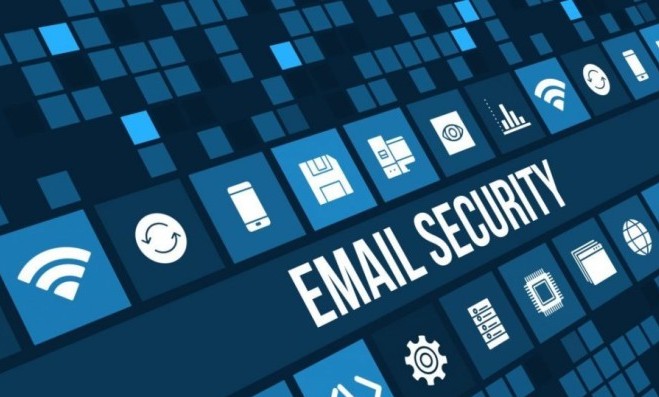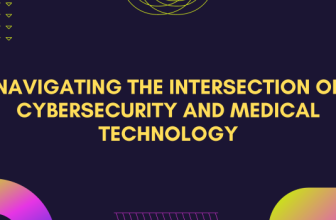
When you think about the security of your business, cybersecurity is an area that can’t be taken for granted. And if you’ve already started mulling over this aspect, the security of your email is as important as the security of your office premises.
Just as a burglary in your office can lead to a lot of confidential data and assets being stolen/damaged, a compromised email system can also result in confidential information leaking out to someone else and your reputation (which is unarguably one of the biggest assets that any business can have) being destroyed.
Therefore, it’s important to pay attention to the security of your company’s email. How? Well, keep reading to find out the answers. But before we dive into answers, let’s look at some of the threats that any modern business email system is exposed to.
Types Of Threats To Your Company’s Email
Email security is no longer about spam protection alone. In today’s environment, the types of threats to email security are scattered across different categories. From spam to phishing to email systems compromised with help of botnets and viruses, the threats are quite variable and so are their scopes of damages. To give you a sense of how concerning things are, here are some statistics:
- Proofpoint’s 2019 Threat Report on Cyber Security revealed that in the first quarter of this year the Emotet botnet was responsible for 61% of all malicious payloads discovered by it. Emotet botnet is used for delivering various types of traffic for any cyberattack, and one of the tools utilized heavily by it to deliver that traffic is spam emails.
- Similarly, State of Email Security Report 2019, published by Mimecast, reveals that impersonation attacks are also on a rise to target email systems of various companies. Officials of as many as 73% of companies involved in Mimecast’s research admitted that at some point someone tried to launch an attack with the help of emails impersonating them.
- And finally, according to Comodo, phishing attacks are also spread widely with the help of emails.
Therefore, email protection today requires a multi-pronged approach. Spam protection alone is not enough anymore. And here we’re going to outline some steps of that approach which you and your employees must follow to keep your company’s email system secured.
Steps To Protect Your Company’s Email
There are several things you can do to protect your business email from security-related issues. However, some of them are very critical. Here we’re going to look at 5 such critical steps that any company must take to protect their email. And here we go:
Use Encryption:
Encryption is one of the classic methods to protect any information in the world of computing, and emails are no different. From sending/receiving of messages to their storage, you can use encryption at every stage to keep your company’s email secure.
For encryption of mails while they’re in transit you can use encryption offered by SSL certificate, while for storing emails in the encrypted format you can use special tools provided by your email service provider.
The tools needed for it vary from company to company so we’re not going into their details at this point, but you can check with your email service provider to learn more about it.
If you’re sending any confidential documents, they too can be protected with passwords. And these are not difficult steps they hardly take more than an hour to be learned, but can save your company many, many more hours that can be consumed in the event of a security breach.
Also, you do not need to spend a lot of money on any of these steps as there are different SSL certificates and types there that suit different business needs. One of the cheapest SSL provider naming SSL2Buy carries diversified SSL portfolio with immense experience in the SSL industry.
Use Digital Signatures Wherever Needed:
Digital signing certificates add a layer of security to help you protect sensitive information in your emails. For instance, if you’re sending a PDF file with confidential information in your email, you can digitally sign that file to let other parties ensure that the contents of the file haven’t been altered after it is signed.
You can keep a document with password protection. Similarly, you can also request others (i.e. your clients, vendors, etc.) to send you confidential information only after signing it digitally.
It’s not costly or difficult to purchase and use these certificates, so they must be used whenever confidential files or information are being sent through email.
Keep Your Email Software Updated:
Your email server software and the clients that you use to manage your emails are not for setting up once and not updating ever again.
You should keep updating both in regular time intervals to ensure that they’re free from vulnerabilities. Make sure that your email software vendor provides regular updates to fix any loopholes, and then get those updates installed whenever they’re available.
Use Scanning Software:
Your email server and client software may already have some scanning mechanisms in place to protect you from spam. However, that’s not enough if you want to effectively protect yourself from other email-related risks as well.
You must put an email scanning software in place that can scan for inappropriate language, images and files in both outgoing and incoming messages to ensure that your company’s reputation and security both remain in good shape.
Educate Your Employees:
You can have the most secure systems and procedures in place, but nothing has to date remained secure from the vulnerabilities of human behaviour.
The laxity of any of your employees in following the due procedures before sending/opening an email, or their lack of knowledge regarding the best practices of email security, can be very dangerous. To ensure that it doesn’t happen, educate your employees regarding email security and make following email security procedures a requirement at your company.
Conclusion:
So, these were some of the common threats to which your company’s email system is exposed, and the steps that you can take to protect yourself from them. The importance of a secure email system in a company can’t be stressed enough, so I would suggest that you take these initial steps today to shield your company against any future spam/phishing or any other type of cyberattack that may penetrate deeper through emails. All the best





